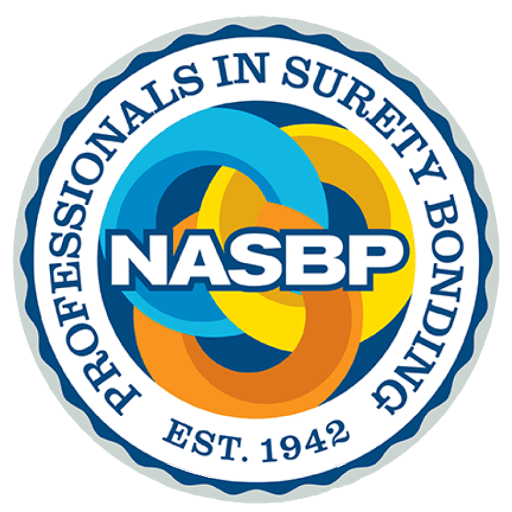
ConsensusDocs Newsletter Article Addresses New Legal Issues for Drones Used in Construction
NASBP is pleased to provide the NASBP membership the following article, “Use of Drones in Construction: New Rules and Legal Issues,” by Warren E. Friedman, Senior Counsel at Peckar & Abramson P.C. which ConsensusDocs published in its ConsensusDocs Newsletter.
Advances in technology have made drones a sought after and cost efficient tool to monitor work on construction sites. Drones provide real-time data on job progress, can help identify quality issues, and acquire other useful information in an expeditious and cost-effective manner. Rather than flying planes or helicopters over a construction site for aerial photographs or video or otherwise have employees walk a site to document conditions, a drone equipped with a camera makes the process easier and significantly less expensive. Advents in technology allow today’s drones to be controlled via mobile devices connected to the internet, and positioned using autopilot navigation. Drones can also be used by the construction industry for, among other things, quality inspections, ensuring that contractors and laborers are performing and meeting milestones, documenting deliveries and timing of deliveries, and tracking construction progress and scheduling.
Until recently, there was a lack of clarity regarding the permissibility and appropriateness of drone usage in the United States. Individual states and local governments have implemented laws governing drones, but there was only limited guidance provided by the federal government.
FAA’s New Drone Operational Rules
Earlier this summer, on June 21, 2016, the Department of Transportation’s Federal Aviation Administration (FAA) finalized the first operational rules for routine commercial use of small unmanned aircraft systems (the FAA’s terminology for drones). These rules are contained within Title 14 of the Code of Federal Regulations (14 CFR) part 107 and are scheduled to become effective on August 29, 2016.
The new rules implemented by the FAA apply to all drones weighing less than 55 pounds that are being used for non-hobbyist or commercial purposes, but there are separate requirements for hobbyist or recreational use of drones. Under the new rules, the FAA has developed a variety of operational limitations that drone users must follow. By way of example:
|
Licensure/Certification for Drone Pilots
Additionally, included within the new rules is a certification requirement for drone operators. The drone operator must be at least 16 years old and possess a remote pilot certificate or be directly supervised by someone with such a certificate. In order to qualify for a remote pilot certificate, an individual must either (1) pass an initial aeronautical knowledge test at an FAA-approved knowledge testing center or (2) possess an existing non-student Part 61 pilot certificate (as provided for in 14 CFR, part 61), complete a flight review within the previous 24 months, and take a drone online training course provided by the FAA. The Transportation Security Administration will also conduct a security background check of all remote pilot applications prior to issuance of a certificate.
Since the FAA will expectedly continue to update these rules as commercial drone operations expand, it is critical that businesses remain informed and up-to-date on new regulations, requirements, and standards. Additionally, drone operators will need to be cognizant of the new regulations to avoid potential civil and criminal penalties.
Insurance, Risk and Litigation Concerns
Since insurance considerations are important for every construction project, construction companies should ensure they have appropriate insurance coverage for drone operation in order to avoid gaps in coverage. Most, if not all, commercial general liability policies contain language which excludes an insurer’s liability for “‘bodily injury’ or ‘property damage’ arising out of the ownership, maintenance, use or entrustment to others of any aircraft . . . owned or operated by or rented or loaned to any insured.” Since a drone would seemingly qualify as an aircraft, or at a minimum, sophisticated insurers or coverage counsel could make such an argument to avoid coverage, construction companies that utilize drones should consider purchasing unmanned aircraft insurance or adding an unmanned aircraft liability endorsement to an existing commercial general liability policy.
Likewise, in light of the FAA’s new rules, appropriate language should be included in agreements and subcontracts to address limits of drone operations, minimum insurance requirements, and ensuring compliance with drone pilot certification.
Privacy concerns is another issue that is typically front and center in the media when it comes to drone related issues, and is one which companies should consider addressing on the front end of construction projects to avoid potential claims from adjacent or nearby property owners.
Aside from pre-project planning, construction companies should also consider the impact drone usage may have on litigation. As a project tool, information obtained from drones is likely to result in requests for discovery should litigation arise and litigants may be expected to preserve any evidence obtained through the use of drones. Consequently, preservation of data obtained from drones or otherwise maintained on drones becomes a significant concern because the failure to preserve evidence may lead to assertions of spoliation of evidence, especially if parties are involved in a dispute at the time and are aware that litigation is likely or if litigation has already commenced. Separately, video and photographic documentation obtained from drones documenting project progress may assist litigants in proving their claims, assist experts in understanding claims, and assist judges, juries, and other fact-finders in evaluating claims and defenses. Like many other technological advances, there are benefits and drawbacks to the use of drones on construction projects from a litigation perspective.
Long known for leadership and innovation in construction law, Peckar & Abramson’s Results FirstSM approach extends to a broad array of legal services—all delivered with a commitment to efficiency, value and client service since 1978. Now, with more than 100 attorneys in eleven U.S. offices and affiliations around the globe, our capabilities extend farther and deeper than ever. Find Peckar & Abramson’s newsletter here.
Free ConsensusDocs Software Training Videos and Webinars Recently Updated
ConsensusDocs offers free, monthly training webinars to help users learn about the variety of features and tools available that can assist in contract negotiations using the ConsensusDocs Platform. Or, learn on your own schedule by watching the updated training videos at https://consensusdocs.org/Training_Videos.
Register for the live training webinars at http://www.consensusdocs.org/Support.
The following is a schedule of upcoming, free online training sessions of the ConsensusDocs cloud-based platform:
|
For more information, contact Lynette Nichols at lnichols@consensusdocs.org or 703-837-5390.
This 60-minute webinar addresses these aspects of the ConsensusDocs technology platform:
|
Remember ConsensusDocs Now Offers its 11 Bond Forms for Free in One Package
ConsensusDocs offers its eleven bond forms for free through its Prequalifications & Bond Forms Package. The package offers surety professionals these benefits:
• Easy editing through the ConsensusDocs Micosoft Word-based technology,
• A collaborative platform helping parties reach consensus faster,
• Current versions of each ConsensusDocs bond form, and
• Convenient access with 24/7 availability.
To access the package, go to the “Quick Purchase” tab at the top of the homepage of www.ConsensusDocs.org. Following through the purchase process is required but the balance due will be $0.
Request a Free Sample ConsensusDocs Contract
Remember that full, sample ConsensusDocs contracts can be requested. To request a full sample ConsensusDocs contract for your internal review purposes, fill out the ConsensusDocs Sample Request form that is at www.consensusdocs.org. Note that any use of the contract, other than for internal review purposes, must come from a valid subscription purchase at www.ConsensusDocs.org.
Copyright Licensing
Anyone interested in using ConsensusDocs for educational or legal research purposes can apply for a free ConsensusDocs copyright license. Once the application is processed, applicants will receive a numbered copyright license letter and full watermarked samples of the requested documents. Licenses must be renewed on a yearly basis, and are contingent upon compliance with the terms of the license letter. To complete an application for copyright licensing, visit the resources page at ConsensusDocs.org.
ConsensusDocs Documents are the only contracts endorsed by 40 leading design and construction industry organizations. Offering a library of 100+ contract documents addressing all methods of project delivery, ConsensusDocs incorporate fair risk allocation and best practices to represent the project’s best interests. Coalition members represent design professionals, owners, contractors, subcontractors and sureties (DOCS). For more information, visit www.ConsensusDocs.org, call 1-866-925-DOCS (3627) or email support@ConsensusDocs.org.
NASBP is an endorsing organization of the ConsensusDocs coalition, an unprecedented effort by 42 plus industry organizations to identify industry best practices and to incorporate such practices in a new generation of construction industry standard form documents. Find out more at the NASBP’s involvement with ConsensusDocs by clicking here.
Get Important Surety Industry News & Info
Keep up with the latest industry news and NASBP programs, events, and activities by subscribing to NASBP SmartBrief.




